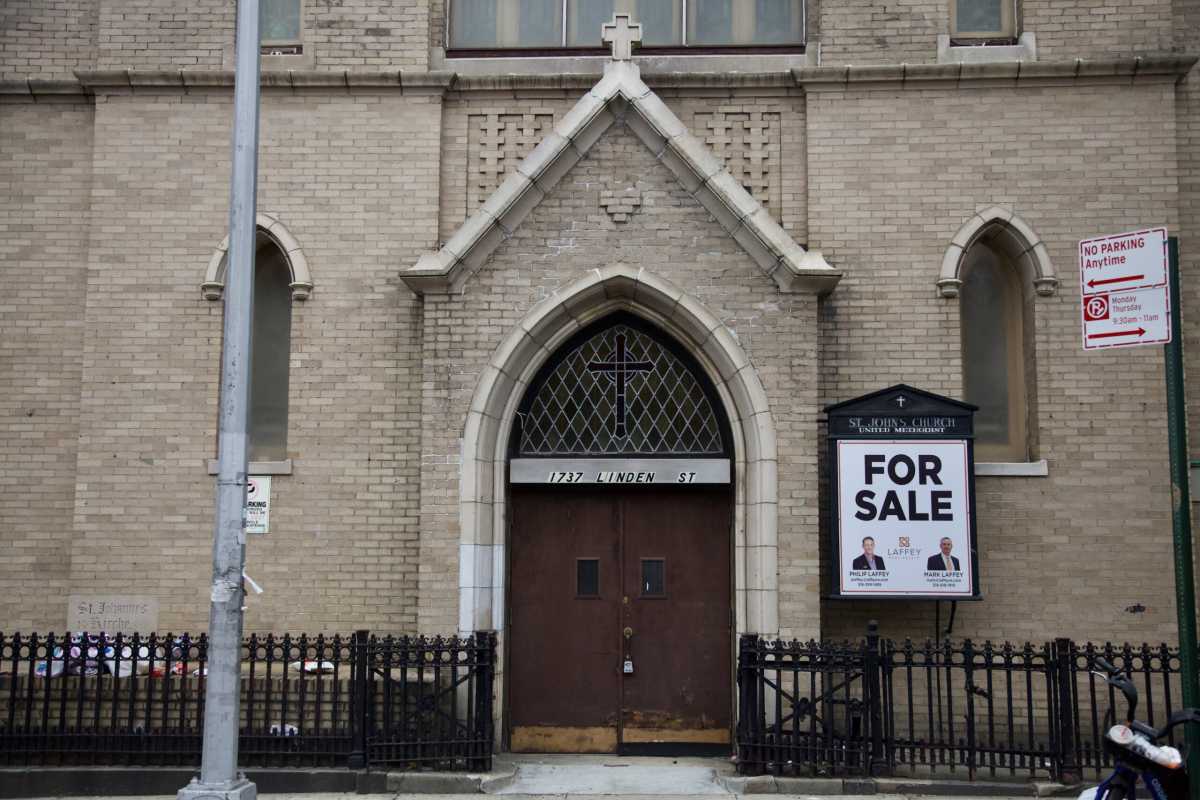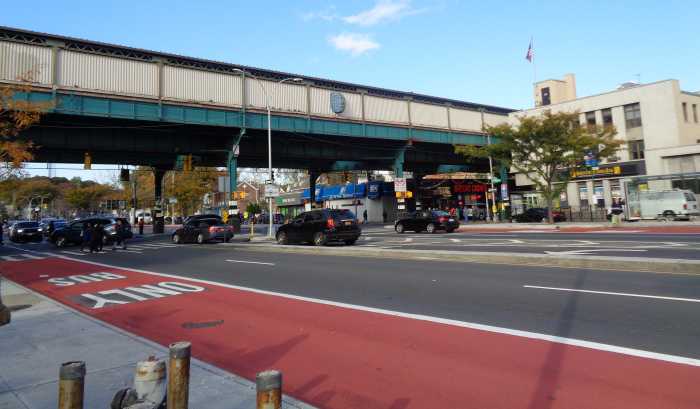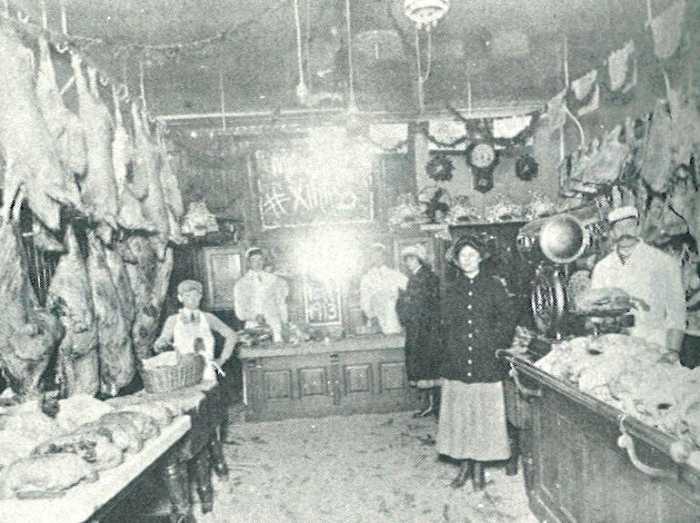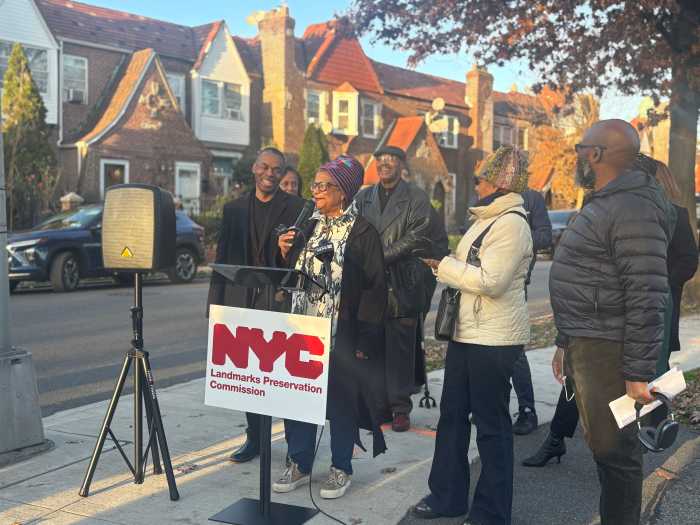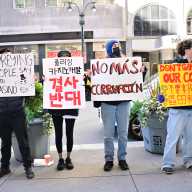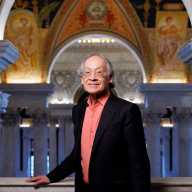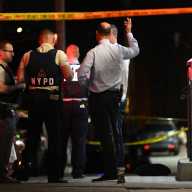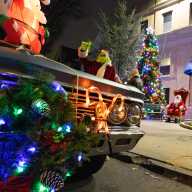It’s not everyday that you can find a Ridgewood church with a “for sale” sign on the front, but that’s what’s happened at the former St. John’s United Methodist Church.
Recently, Laffey Real Estate posted the signs in front of the entrance to the former house of worship at 1737 Linden St., off Seneca Avenue. According to a representative of Laffey, the property just went into contract with a buyer who intends to use it for community purposes — though the exact nature of such purposes was not immediately known.
A listing for the church posted on LoopNet had the former St. John’s United Methodist Church campus for sale at a staggering $2,749,000. The listing boasts the main building, a two-story sanctuary, “with soaring cathedral ceiling, balcony and stunning stained glass windows.”
The building was erected in 1906. Its cornerstone, laid just a few feet away from the church’s main entrance, reflects that history, as it’s engraved, “St. Johannes Kirche, 1906,” the German translation of “St. John’s Church.”
According to a United Methodist Church database, the St. John’s United Methodist Church ceased operations in July 2019.
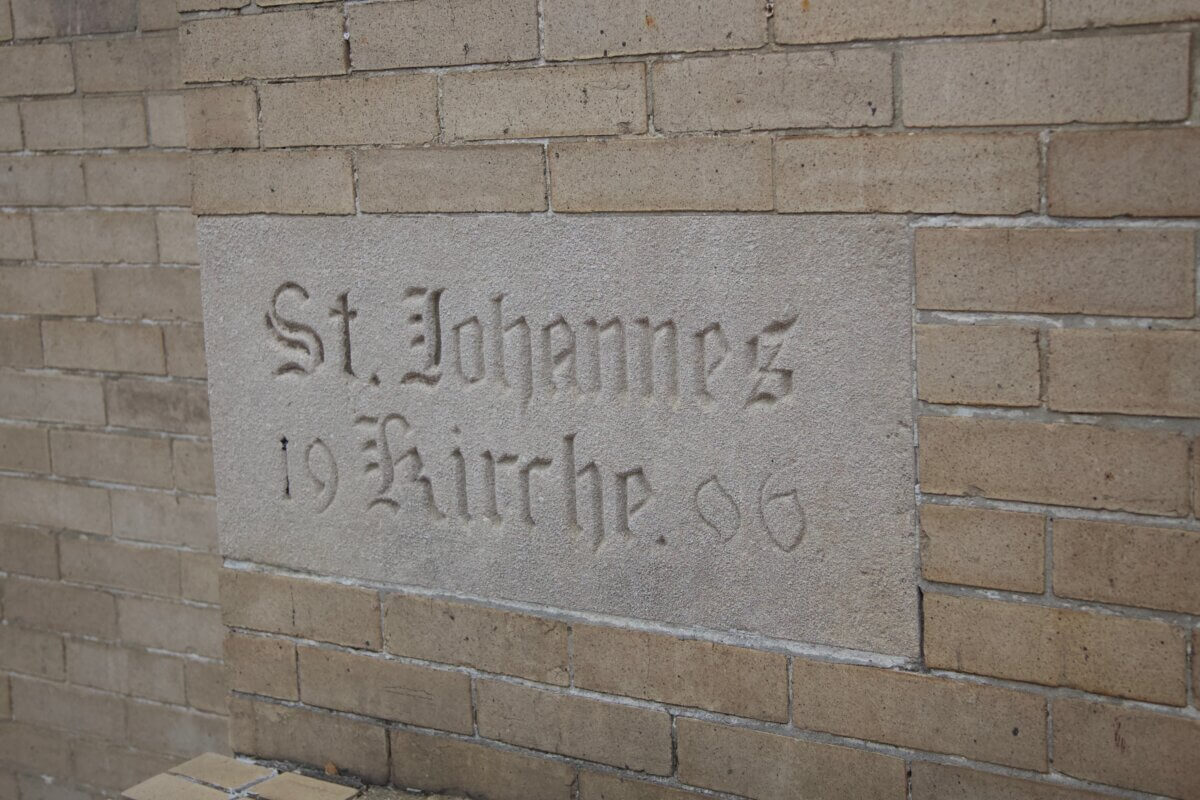
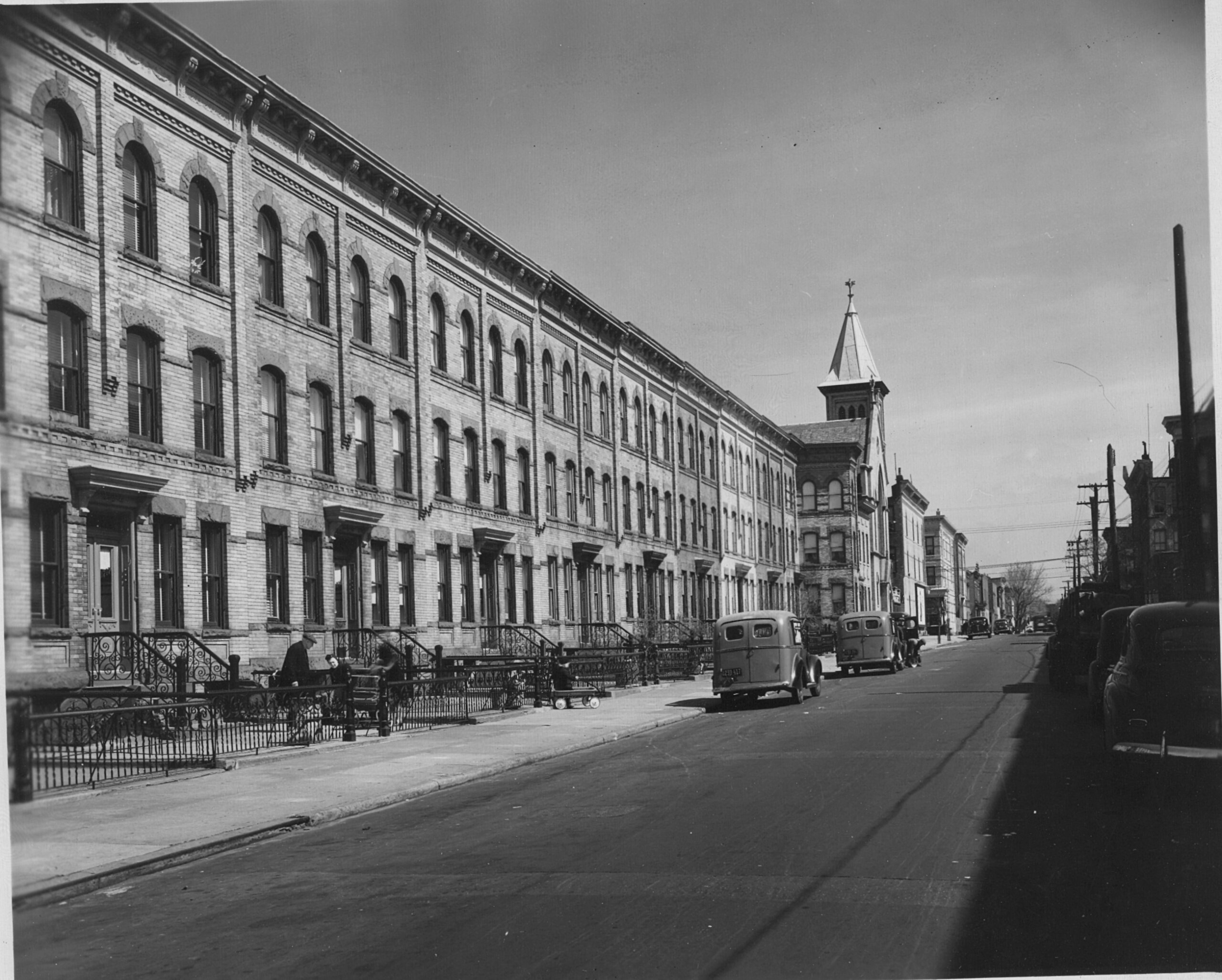
The church’s rich history is outlined in “Our Community: Its History and People,” published by the Greater Ridgewood Historical Society in 1976. What follows is an excerpt of that account:
The Ridgewood United Methodist Church was officially organized on Jan. 24, 1896, and was known as the Ridgewood Heights German Methodist Episcopal Church. The groundwork for this congregation was laid in the years 1890-1892 by two laymen who gathered together some children in the fields on Sunday afternoon for outdoor Sunday School sessions.
The work grew rapidly with the influx of new residents and to the original chapel was added a large brick church building and a parsonage. In 1941, the name was changed to Ridgewood Methodist Church, and finally to the Ridgewood United Methodist Church.
The St. John’s congregation began its life as a Sunday school extension of Emanuel Church. Soon the work prospered and in 1903, a congregation was established. The church building was begun in 1906, with additions being made in 1908 and 1913. In 1910, the parsonage was built. A final addition was an educational building with entrance on Seneca Avenue, which was a project undertaken in connection with the celebration of the golden jubilee in 1953.
In November 1971, the Ridgewood and St. John’s congregations began meeting for worship together in the St. John’s building, and in January 1972, the merger was officially consummated.
As of 1976, St. John’s Ridgewood United Methodist Church boasted a congregation of 450 members under the leadership of its pastor, Reverend J.M. Hunsberger. The church hosted a variety of community groups and organizations including the Boy Scouts, a youth fellowship and several choirs.
They loved a parade
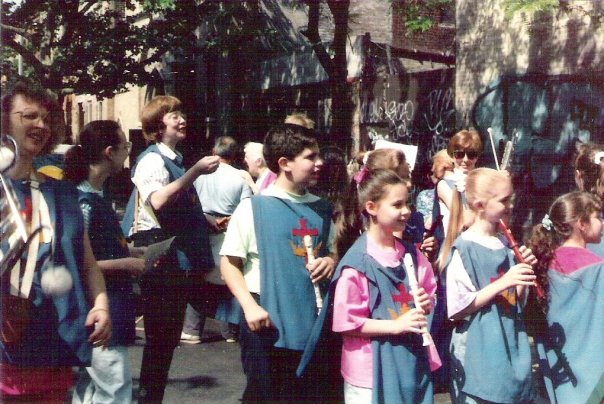
Through the mid-1990s, St. John’s vibrant congregation played an important role in the area’s biggest event involving local Protestant congregations: Anniversary Day.
Celebrated also as Brooklyn-Queens Day on the second Thursday of June, Anniversary Day marks the founding of the first Sunday schools on Long Island more than 125 years ago. Congregations would take part in parades featuring marching bands and streamer-lined floats carrying Sunday school students throughout Ridgewood.
The Old Timer had the privilege of participating in two such Anniversary Day parades — as part of the St. John’s contingent, no less — in the early 1990s.
The festivities began with a special, brief worship service in St. John’s sanctuary, then quickly moved out in front of the church where musicians, parishioners and Sunday school students gathered. The contingent included, among its musicians, a group of recorder-playing Catholic school students, brought there with the help of their music teacher, who was a member of the St. John’s congregation.
Before long, the St. John’s marchers stepped off. They made their way to Onderdonk Avenue, where they met up with groups from other churches and proceeded down the main parade route along Onderdonk and Catalpa Avenues.
Fortunately, both parade days in which The Old Timer was a part were beautiful June days, bright and sunny. But for musicians carrying drums and glockenspiels, which were quite heavy, the lengthy march through Ridgewood might have been a bit tiring.
Less burdened by the weight of instruments were the Catholic school contingent of recorder-players, and their music teacher had a unique way of keeping them in tune.
Marching ahead of the glockenspiel players, the recorder troupe played the notes to hymns scrawled onto colorful oak tag, propped up on the back of a float carried ahead of them.
When the parade ended, the marchers returned back to St. John’s, having walked about about a mile in each direction. The adult members of the congregation spent much of their post-parade time socializing and disassembling the floats in the church basement, while the children feasted on hot dogs and ice cream.
Faded memories
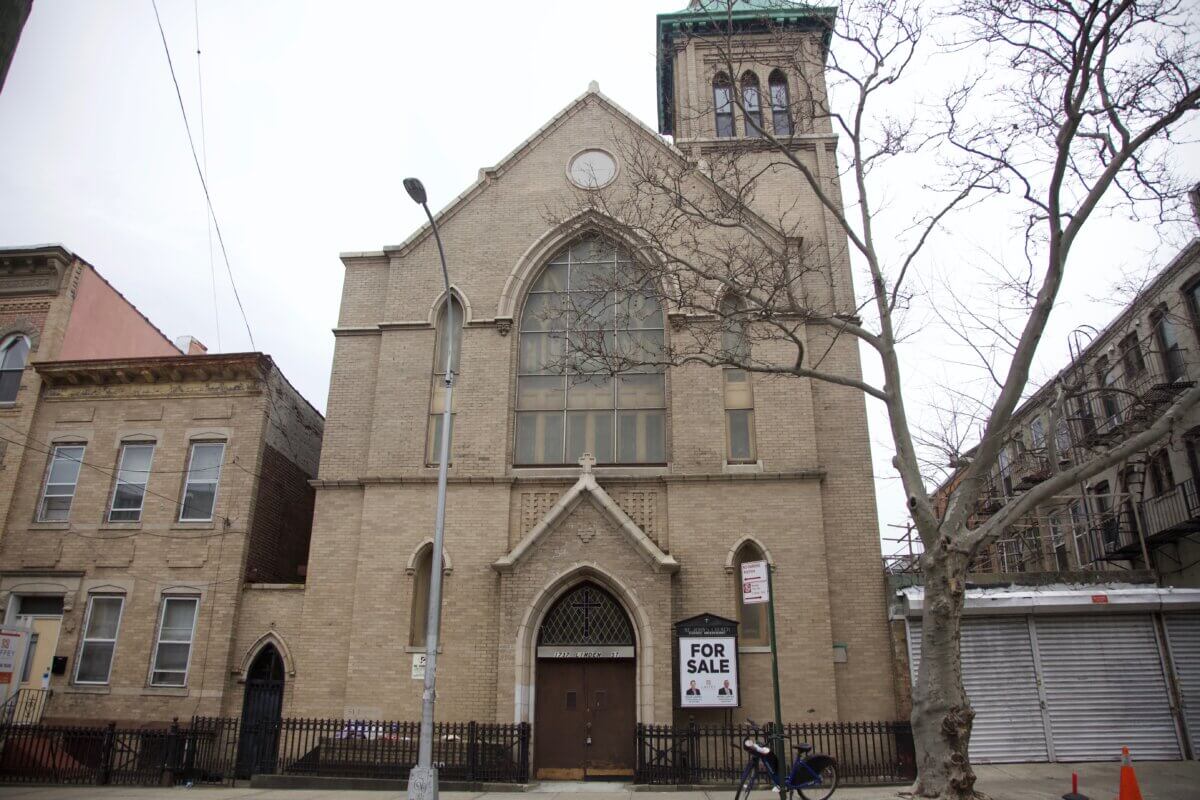
Over the 43 years leading up to its closure, the church’s congregation dwindled to a precious few as the community further evolved, and fewer members participated in the parish’s activities.
Many of the Protestant churches that popped up across the Greater Ridgewood area at the turn of the 20th century have seen declines themselves; some, like St. John’s, have ceased to exist altogether.
St. Saviour’s Church in Maspeth, for instance, lasted until the mid-1990s before its Episcopalian congregation had dropped to such an extent that the church could no longer operate. Ten years later, after a different denomination came and left the church building, the property was sold to developers — and the building was meticulously dismantled for preservation and reconstruction elsewhere. As of this writing, the disassembled St. Saviour’s remains mothballed and in storage.
The Maspeth United Methodist Church survived until the mid-2010s when a fire destroyed the sanctuary. The small congregation then merged with the Glendale United Methodist Church, and they’ve been meeting together at the original Glendale house of worship on Central Avenue off 66th Place ever since.
Even Anniversary Day is a thing of the past. The parades ended in 2009, and the holiday itself has been essentially removed from the public school calendar.
What does the future hold for what was once St. John’s United Methodist Church in Ridgewood? Not long after the sale contract is signed, we’ll find out together.

